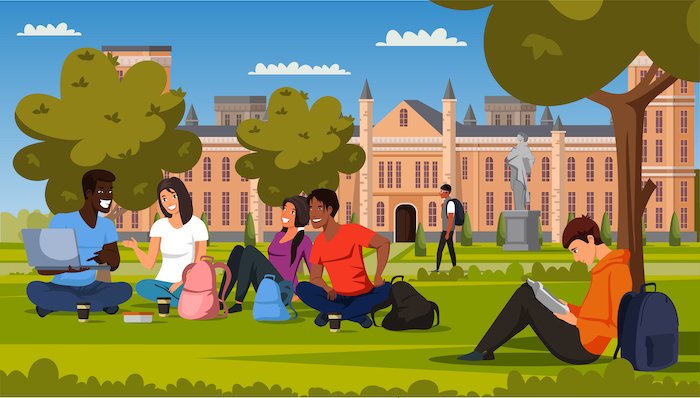Let us understand the differences between a College and a University in the United States
The main difference between a college and a university is that they differ in the kind of program and degrees they offer.
- University refers to larger institutions that offer both undergraduate and graduate programs.
- College refers to liberal arts colleges, community colleges, and technical and art schools.

Let’s begin with Universities
In 2022, UC Berkeley enrolled 32,479 students whereas Stanford University admitted 7700 students.
Public Universities
Private Universities
— rely on tuition fees, and donations from its patrons as they do not get any financial support from the government. Some examples are Pepperdine University, Chapman University, Harvard University, and Yale University.
Research Universities
— can be public and non-profit private universities and they spend millions in research every year.
Did you know that Stanford University is a non-profit public charity that receives its funds from sponsors, donors, and of course parents and students. They spend carry official research designations billions of dollars each year on research and development. Students get to interact with university professors who focus on research and publishing papers in their fields.
Source: https://www.stanford.edu/research/
What are the Benefits of studying in a university
One can choose from a broad range of courses that best align with their interest and career path. Universities feature incredibly diverse campuses, allowing one to meet and work with students, faculty, and staff from many backgrounds.
Some Challenges
The faculty in many large public universities focus on research and the class size is huge. They also have limitations in classroom availability and that makes it difficult for students to register for a course before it fills up. While some students thoroughly enjoy large, bustling communities, others may feel isolated or even lost or overwhelmed in such a surrounding.

Now let’s take a look at colleges
– Community colleges offer two-year associate degrees that help students to transfer to a four -year college for an undergraduate degree It helps students stay close to home and the parents save on tuition cost.
– They offer specialized training in a particular industry which include culinary arts, dental hygiene and health care. These colleges usually offer students certificates or associate degree
– These programs offer a strong foundation in fields like math, economics, law, business, history etc. They are typically private and offer four-year bachelor programs.





